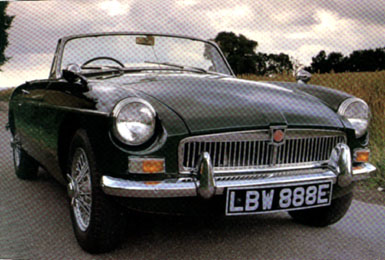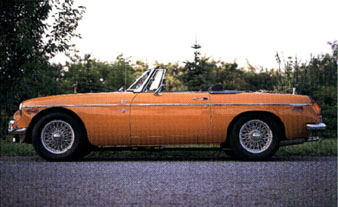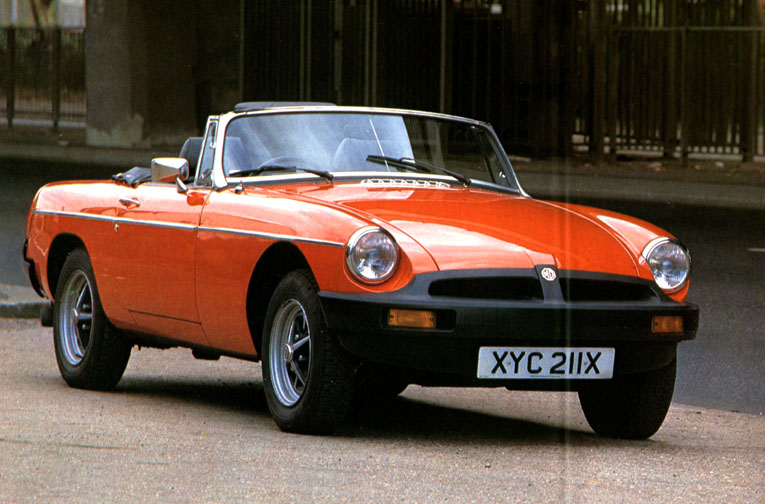|
|
|
|
|
|
|
|
|
|
|
|
|
|
|
 |
|
|
|
|
|
|
|
|
|
|
|
|
|
MGB - The Most Successful MG Ever
|
|
|
|
 |
The sports car buyer was looking for more comfort and sophistication in the late fifties and early sixties. The MGA was showing it age with lack of such features as roll up windows and lockable doors. Work on the its replacement had begun shortly after the introduction of the MGA in 1955. The MGB was introduced in 1962 and was an immediate success. Over its 18 year lifespan, more than 500,000 MGB's were produced. |
 |
|
|
 |
|
|
|
|
A 1967 MGB Mark I with its 1798 cc engine it could reach a top speed of 106 mph. |
|
|
 |
|
|
|
|
|
|
To give the MGB a better ride, MG designers knew they had to make the car more rigid. This was accomplished using unitary construction. When the individual panels were welded together, the box-like structure had immense strength. The new 1798 cc engine produced 95 bhp. In 1967, the MGB Mark II was introduced with a new transmission and an optional automatic. The automatic transmission was later dropped in 1973. The MGB stayed in production longer than had been anticipated. |
|
|
|
A 1970 MGB - while the long sloping lines of previous MGs were gone it was as aerodynamic as the MGA. |
|
|
|
Changes to the MGB were primarily to meet US safety and emission standards. By 1975, it was feared that open cars might be banned outright for safety reasons. This never materialized but new crash regulations were put in place. In order to comply the MGB's suspension was raised 1.5 inches and the "5 mph" bumbers were added. Performance suffered from the weight of the new bumpers . Handling worsened with the increase in ride height. Sales were not affected as a number of open cars failed the new safety standards. Among those that failed was Jaguar and had to drop the E type. Added to the performance problem were the increased emission controls further dampening engine power. |
|
|
|
|
|
|
|
 |
|
|
|
The MGB was only slightly shorter than the MGA. A larger engine coupled with a less weight made it faster than the MGA. |
|
|
|
 |
|
|
|
|
As with earlier times internal problems within the Company was MG's eventual downfall. In May 1968, British Motor Holdings merged with Leyland. to become British Leyland Motor Corp. In 1961, Leyland had acquired Standard Triumph as well as Rover and Alvis. It sonn became clear that the merger was really a takeover by Leyland and Triumph. While MG was outselling Triumph in the US, BL had closed down MG development division. MG had to take a back seat to Triumph. It was only a matter of time for the MG Badge. The last MGB rolled off the production line in October 1980. |
|
|
|
This late model MGB with its safety bumpers and increased ride height. |
|
|
|
|
|
|
|
|
|
|
|













